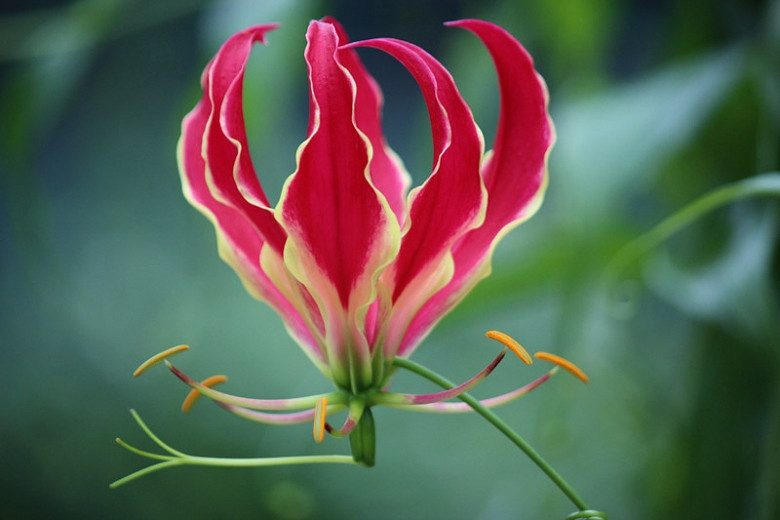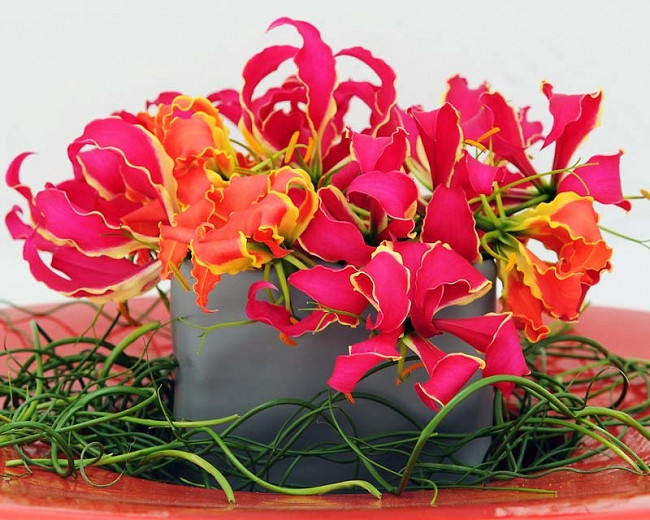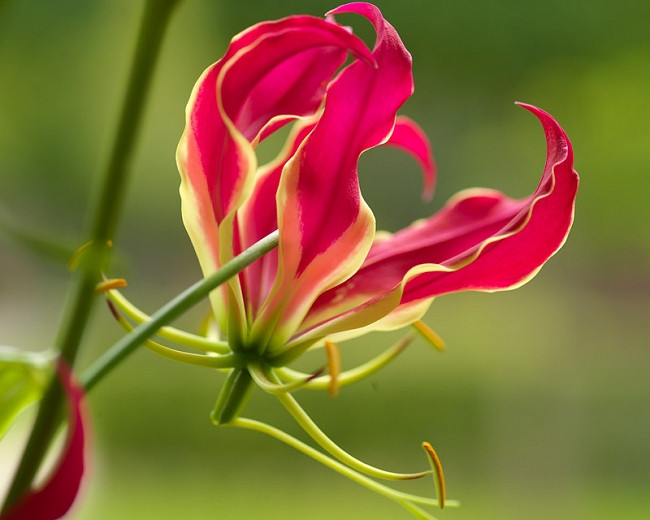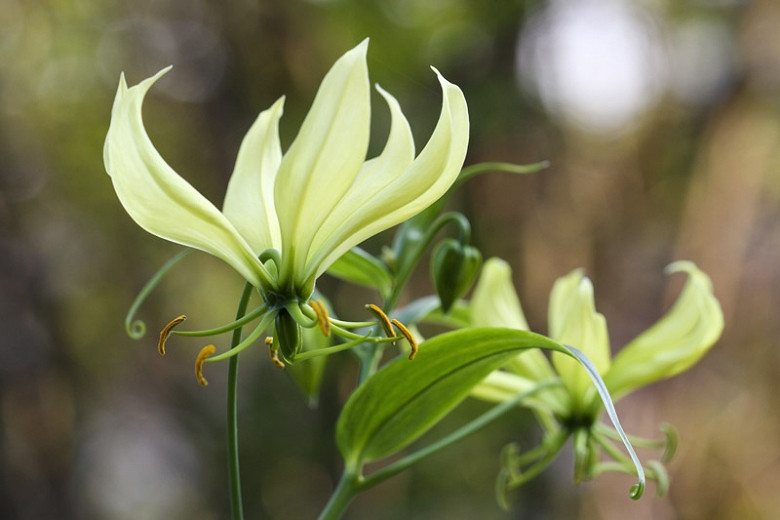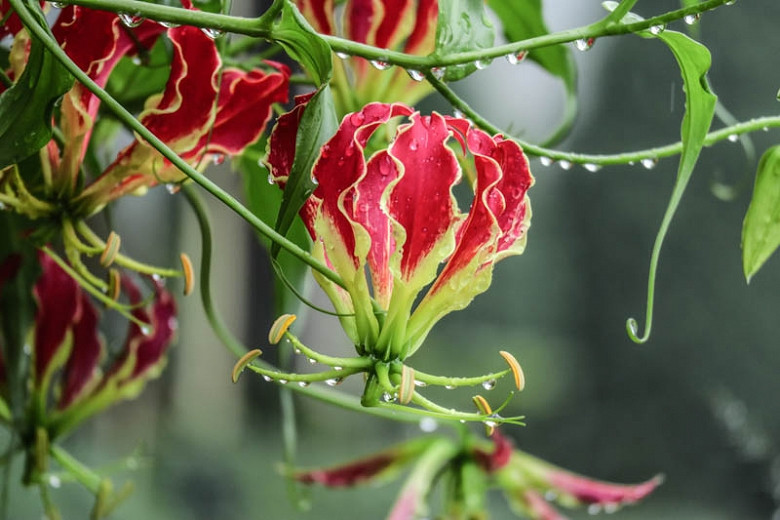Gloriosa carsonii (Gloriosa Lily)
Incredibly beautiful, Gloriosa carsonii (Gloriosa Lily) is a deciduous, tuberous, tendril climber boasting magnificent mahogany-purple and lemon-yellow flowers with dramatically forward-reaching stamens and swept-back, ruffled petals. Borne in the upper leaf axils of long, spindly stems, the flowers bloom from late spring through fall and then turn into wacky-looking ribbed seed pods.
Incredibly beautiful, Gloriosa carsonii (Gloriosa Lily) is a deciduous, tuberous, tendril climber boasting magnificent mahogany-purple and lemon-yellow flowers with dramatically forward-reaching stamens and swept-back, ruffled petals. Borne in the upper leaf axils of long, spindly stems, the flowers bloom from late spring through fall and then turn into wacky-looking ribbed seed pods. The leaves of Gloriosa Lilies are another wonder. From the tip of each glossy green leaf sprouts a long green tendril that twirls out to grasp whatever is nearby by spinning itself around it. The stem hoists itself upward or outward, bearing its flowers like so many parachutes or butterflies.
- Grows up to 3-4 ft. high and wide (90-120 cm).
- Thrives in full sun or partial shade in rich, well-drained soil that retains its moisture.
- Plant your Gloriosa tubers 3 in. (7 cm) deep and 12 in. apart (30 cm) in early spring after the last frost date. Shoots will emerge two to six weeks after planting. For best effect, provide an upright structure for the emerging stems to grasp.
- Cut down top growth as it dies back after flowering.
- If you live in a cool area (hardiness zones 3-7) and want to save your bulbs, you may lift and clean the tubers planted in the garden for winter storage at a cool room temperature (60° F to 70° F). Bulbs in pots may be stored indoors right in their pots, ready for use the next summer.
- Highly toxic if ingested, tubers may cause skin irritation. Wear gloves and other protective equipment when handling.
- Toxic to dogs, toxic to cats, toxic to horses, toxic to humans.
- On the bright side, this means they are generally impervious to garden pests such as deer and squirrels. Even so, in some areas, squirrels have become so aggressive that they may dig up the tubers before rejecting them as a snack. To counter such foragers, simply replant the tubers or position rocks over the planting site until the plants get established.
Requirements
| Hardiness | 8 – 10 |
|---|---|
| Heat Zones | 7 – 11 |
| Plant Type | Bulbs, Climbers |
| Plant Family | Gloriosa |
| Exposure | Full Sun, Partial Sun |
| Season of Interest | Spring (Late)Summer (Early,Mid,Late)Fall |
| Height | 3' – 4' (90cm – 120cm) |
| Spread | 3' – 4' (90cm – 120cm) |
| Spacing | 12″ (30cm) |
| Depth | 3" (7cm) |
| Water Needs | Average |
| Maintenance | Low |
| Soil Type | Loam |
| Soil pH | Acid, Alkaline, Neutral |
| Soil Drainage | Well-Drained |
| Characteristics | Showy |
| Tolerance | Deer, Rabbit |
| Garden Uses | Arbors, Pergolas, Trellises, Patio and Containers, Wall-Side Borders |
